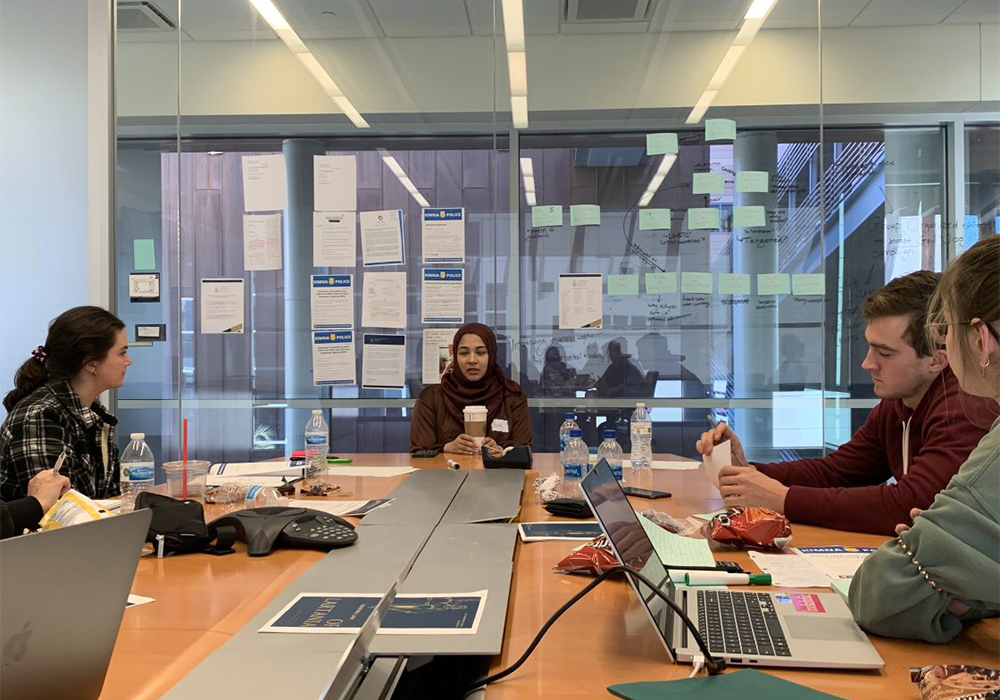Students whisper as they pour over letters, newspaper articles and evidence, searching for clues. Tables are scattered with notes and timelines fill the walls, all searching for one answer — whodunnit?
The fictitious crime in question, an art heist, is at the center of an immersive experience from the university’s Rule of Law Collaborative (ROLC), part true-crime simulation and part escape room.
“Art Heist in Lartania” is the brainchild of the collaborative’s deputy executive director Karen Hall and media arts professor Evan Meaney, who spent the past six months developing the scenario.
Under an interdisciplinary grant from the U.S. State Department, the ROLC develops learning scenarios and models to assist in federal anti-corruption training efforts. This game will do just that: give federal agents a hands-on resource to develop skills used in the field, such as organizing sensitive information and critically thinking about problems from different perspectives.
“All games teach things. We spent some time identifying what learning outcomes we wanted for our players and then developed a plausible narrative to support those,” Meaney says. “Testing your game is critical to making it as robust and immersive as possible.”
Moore School students in IBUS 743, Organizational Misconduct and Global Corruption, were among the first to test the game. Master of international business (MIB) students were chosen because of their advanced knowledge of corruption trends, including nepotism, bribery and institutionalized corruption.
Participants were introduced to a museum heist in Lartania, a fictional European nation, in a true crime podcast hosted by Meaney. They were then placed into Special Investigations Units and tasked with uncovering who was to blame – and who might be covering it up.
“Each team plays a different game,” Hall says. “Which leads they chase, which questions they ask and which red herrings they find.”
Students put their knowledge to the test in a marathon of witness interviews, evidence analysis and mock search warrants.
“This simulation is one of the many hands-on experiences I have participated in at the Moore School and is my favorite so far,” MIB student Juliana Franco says. “Experiences like these enrich my education experience by allowing me to take the tools and knowledge from my courses and apply them to practical scenarios where I can see the consequences of my decisions.”
At the end of the simulation, the culprit was revealed — to the shock of some players.
“My team was quite surprised to hear who the true culprit was,” Franco says. “Although we didn’t necessarily crack the code and get it all right, we were glad we had similar findings as other groups and were proud of what we uncovered.”
While the crime is fake, the lessons learned are real for students and game developers. Testing the game allows for final adjustments and improvements before it rolls out for State Department usage in early 2023.
“A situation is never as simple as you think it is,” international business master's student Kayla Hooks says. “There is always more to the story — you just have to ask the right questions."
